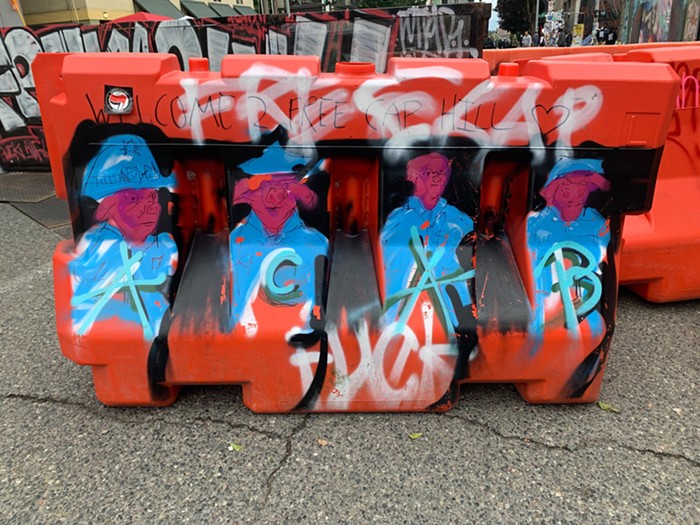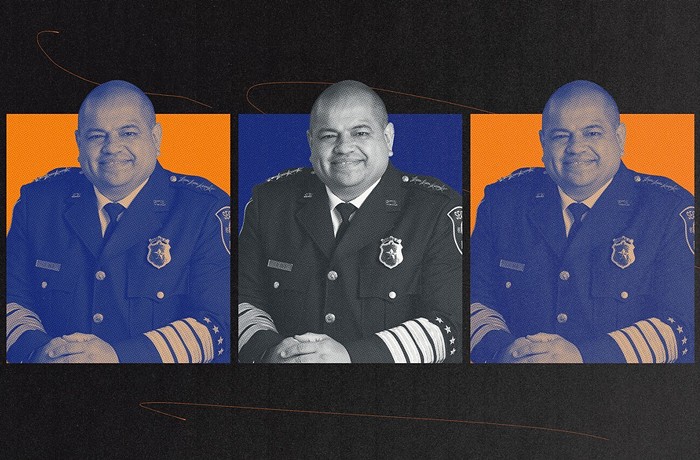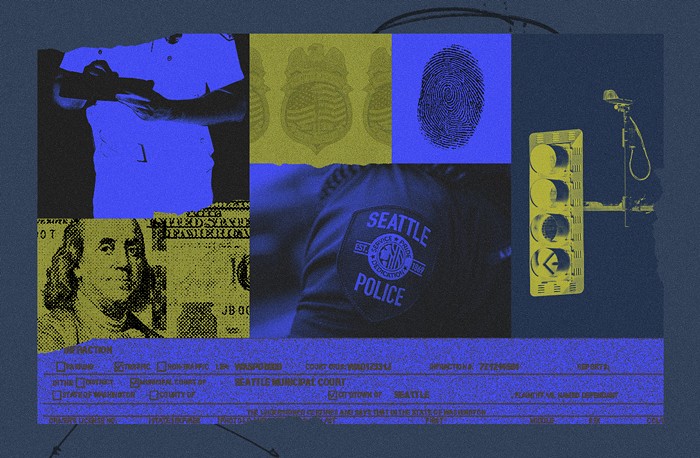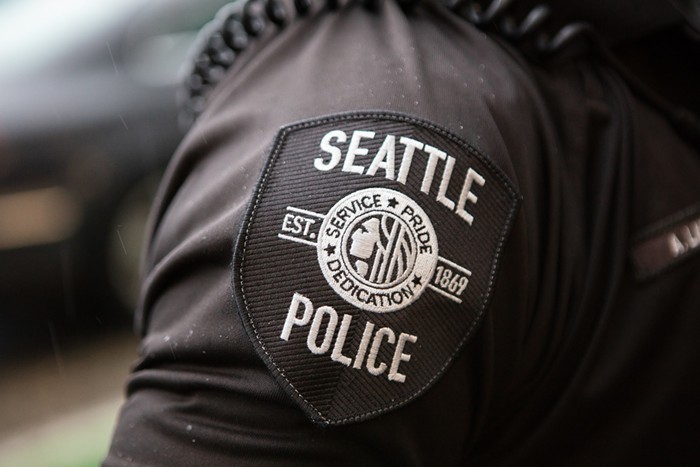
Just last night a band of Proud Boys walked through CHOP seemingly with the intention to stir up trouble, eventually beating someone up a couple of blocks outside the protest zone. The barricades—which are being reconfigured as I type this—are an important part of maintaining the safety of both the protestors and CHOP, manned by volunteers who deescalate and quite literally put their bodies in front of danger to protect the area. Volunteers say that responsibility is even more important at night when the darkness brings out the creeps.
One night volunteer, Jas, said that nights can get "pretty bizarre" once it hits 10:00 p.m. and the crowds of thousands of tourists and Seattleites from different parts of the city head home, leaving the couple hundred overnight residents of CHOP scattered throughout the six blocks. "It's a more tense environment than it is during the day with less people," they said. "But we're being organized and as prepared as we can."
The change in mood is a sentiment echoed by Obi, another volunteer who has been volunteering for the night shift at the barricades ever since the protests turned into CHAZ (then CHOP).
"At night it's more people cruising by. We've seen a lot of the same vehicles going around, surveying us. Souped-up trucks—nice old Trump wagons—revving their engines, flashing their lights, pointing at us, doing white power symbols, stuff like that," she said. "But that doesn't really happen during the day—they're too cowardly to do it during the day."
The night volunteer team has been working to organize into a better shift system, making sure there are trained deescalators on-call and cars available to block entrances if reports of another driver determined to ram their car through a crowd of protestors materializes.
Both Jas and Obi attested to being accosted by white agitators looking to shake the resolve of the protestors and start trouble in CHOP.
"It's usually older white men [who] come around and start creeping on us during the day. They start asking us questions about our politics, asking us questions about who we are and what we're doing," said Obi.
She says she tries to use her white privilege and the fact that she hasn't experienced racial injustice to "stay calm, stay vigilant, stay active," redirecting the agitator away from CHOP or calling in for more deescalation help.
With the negative perceptions of CHOP only becoming more amplified as the president spews disinformation, it's important to those on the night shift to deescalate tense situations as they arise. Jas emphasized the team's careful approach to reporting accurate information about threats so as to not cause too much panic.
"Trying to keep people calm and less people engaging with threats is also a big part of our role," they said. "We want to make sure [the protestors] stand back for their own safety and the safety of the people who are coming in and trying to be agitators too."
A majority of the night shift volunteers on the barricades are white, a fact that Obi believes comes from one of the main focuses of the protests being centering the voices and safety of the Black community.
"I feel like a lot of us do kind of have the feeling that we are here to be the shield so that people who can't usually convene can come together, share ideas, strengthen their communities," she said. "It's time for us to elevate and protect other people so that they can have the same societal joy that we've been experiencing."
This urgent need to protect the most vulnerable was shared by Jas, who said that the night shift volunteers' main purpose is to keep CHOP safe so that Black and indigenous people can have the space to "freely communicate with each other and voice their demands and their needs to people who are here that want to help them and support them."
As the layout of CHOP begins to shrink over the next day, allowing more traffic to maneuver through the area, it remains to be seen how this change will affect the demands and safety of everyone at CHOP.



















